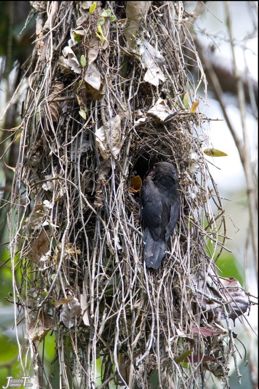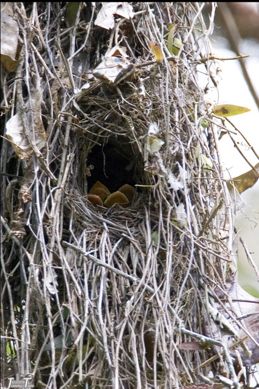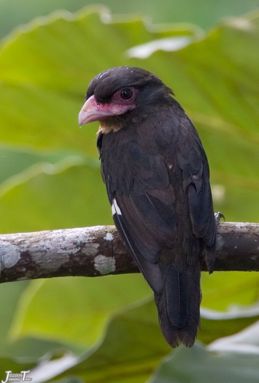Jimmy Tan a.k.a. skylark photographed the nesting of the Dusky Broadbill (Corydon sumatranus) at Kinabatangan, Sabah in May 2009.
The nest is an elongated, pear-shaped structure with a tapering tip that is attached to a branch or whatever. Some nests have a distinct tail. The entire structure is made up of plant materials like leaves, stems, twigs, etc. that are roughly put together and not easily recognized as a nest to a casual observer. The entrance is on the side, sometimes with an overhang to partially cover the actual opening.
A full clutch is 3-4 eggs, with three being common. In this case the clutch was most likely four eggs as four chicks hatched.
The Dusky Broadbill is a stocky blackish bird with a pale bib. The large, somewhat pinkish bill has a wide gape and a hooked tip. The bird is an uncommon resident in Malaysia.
.
.
.
.


This post is a cooperative effort between NaturePixels.org and BESG to bring the study of bird behaviour through photography to a wider audience.









